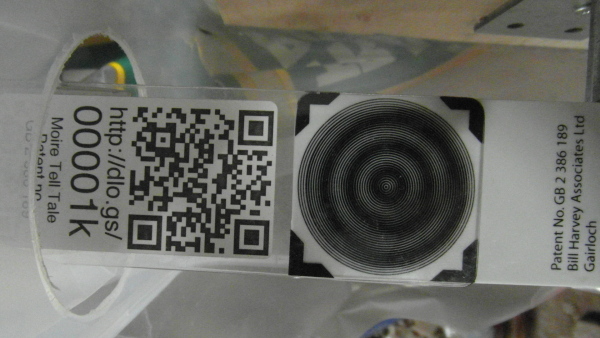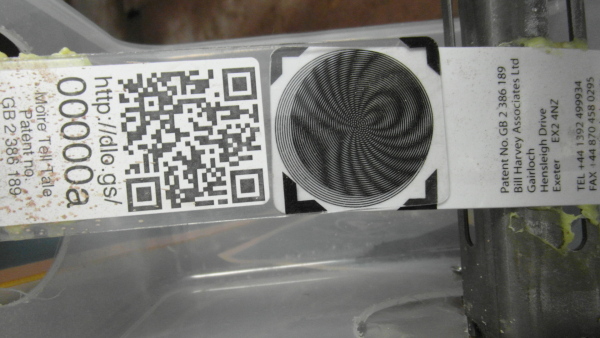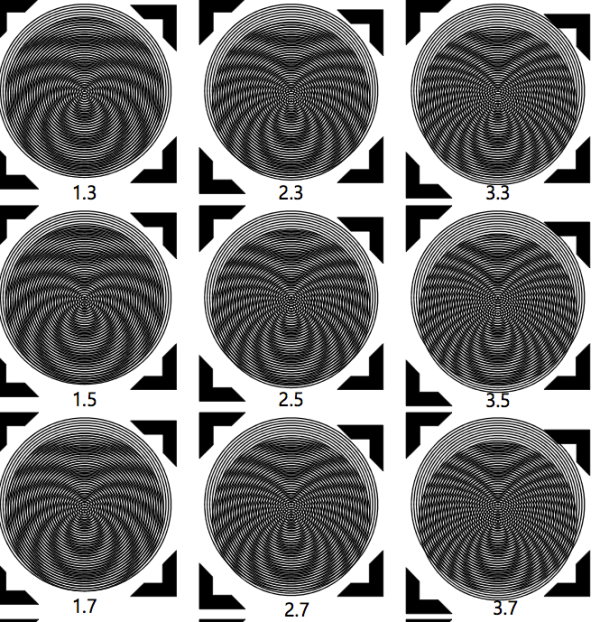Moiré Tell Tales produce a fringe pattern that changes shape as the two parts move. You can explore the effect using the tool below (requires Java, we're working on a version that doesn't).
Concentric circular fringes indicate zero displacement. The Moiré Tell Tale should be adjusted to as close to this state as possible at installation. This tell tale is very nearly centred. A slight displacement is detectable by the fact that the fringes are slightly off centre within the circular region:

When the crack has moved, the fringes will no longer be circular. An "arrow" appears in the fringe pattern, which indicates the direction of movement. The number and shape of fringes indicates the amount of movement:

Moiré Tell Tales are read by comparing the fringe pattern with test patterns, either using the tool below, or using a printed read out sheet. The most reliable method is to count the number of broken fringes (those that reach the edge rather than looping back to the centre). Displacements can be measured to an accuracy of 0.1mm this way.
This excerpt from the readout sheet (full sheet linked below) indicates that the displacement in the image above is 2.5mm:

The fringe pattern photographs well. Photographs can be taken on site, and displacements determined later in the office.
To help with reading Moiré Tell Tales, we've made a printable reference sheet (PDF, click to download) and an interactive applet. The applet should appear below if you have the Java plugin.